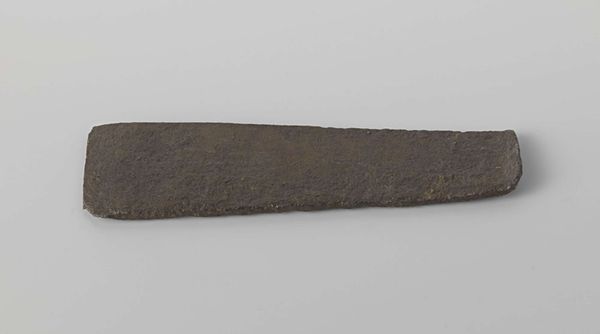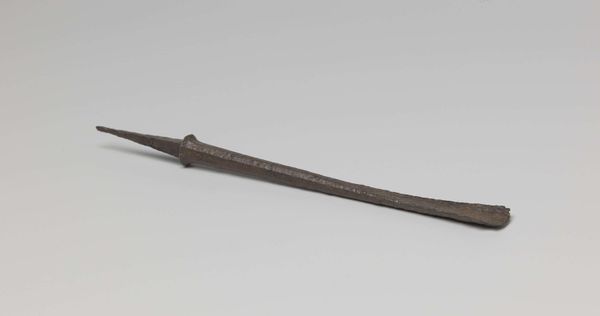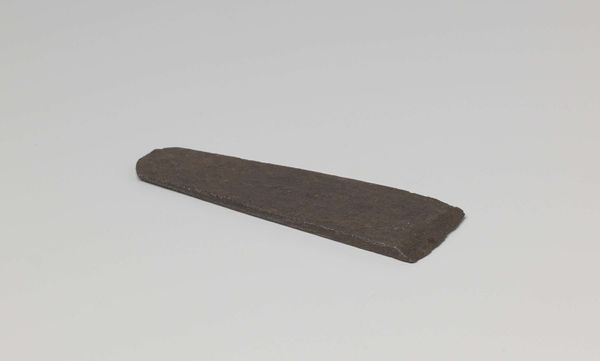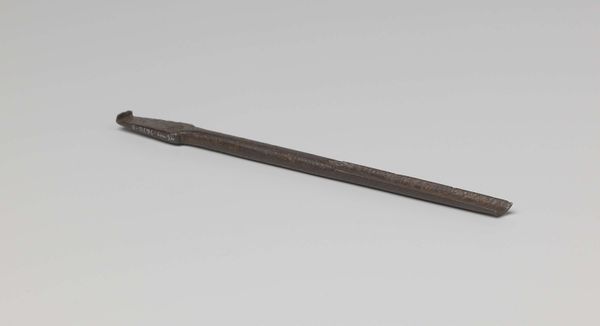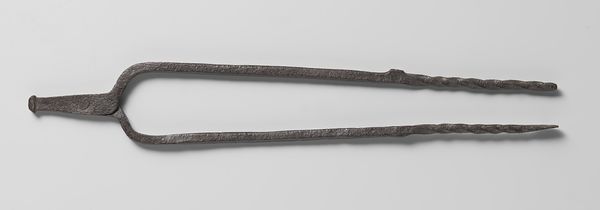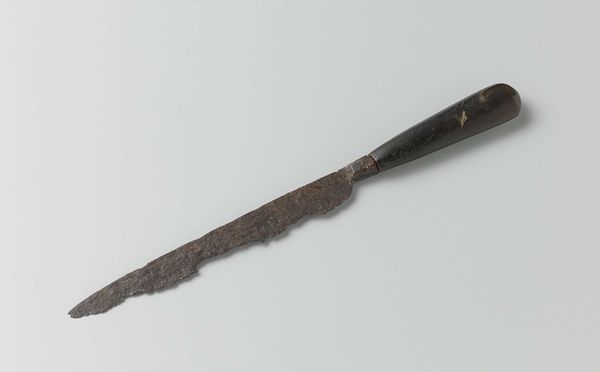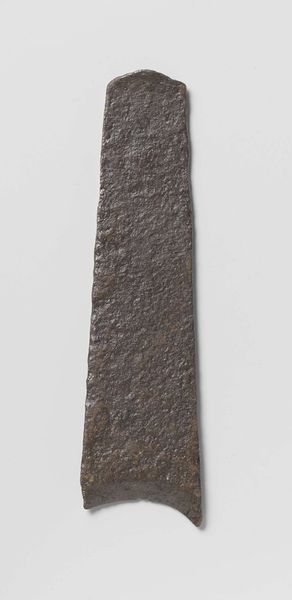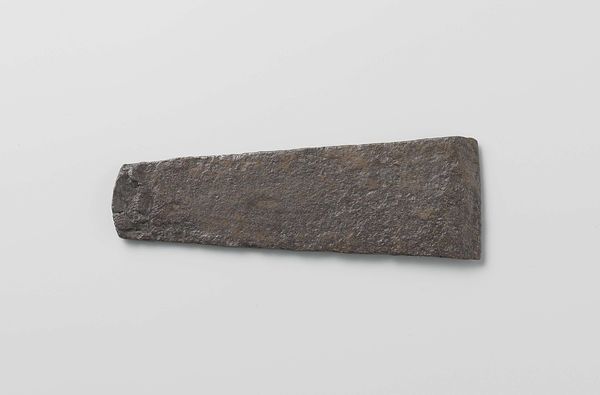
metal, sculpture
#
metal
#
sculpture
Dimensions: length 14.6 cm, width 4 cm, weight 121 gr
Copyright: Rijks Museum: Open Domain
Curator: Here we have a most curious object: a metal tool titled "Beitel, tapstoelopend", or "Bevel, tapered" made circa 1590-1596. It resides here at the Rijksmuseum. Editor: My initial thought? That it is the color of dried blood. There's an honesty in the aging; the texture is rough, raw, unapologetic. A certain brutality emanates from the object, maybe because of what it could create or destroy. Curator: I appreciate your visceral reaction. Let’s think more deeply about how such things are created and what it represents beyond mere utility. When viewing something so patently industrial, consider that a person or persons applied specialized labor, expending significant effort not merely in fashioning metal to prescribed use, but also with the extraction, processing, and movement of that material from somewhere far from here. Editor: Exactly. The material itself speaks volumes, doesn’t it? Metal, undoubtedly forged, tells tales of mines, furnaces, and workshops—places of intense physical work, almost always outside our usual idea of ‘art’. Do we usually call such things art, really? Yet, it represents an enormous degree of design, expertise, and the manipulation of base components toward targeted manufacture for specialized markets. Curator: I am compelled by your analysis of materials and its manufacture in its historical environment. Now imagine the artisan at work, the rhythmic clang of the hammer, the scent of hot metal—the maker lost to time now a living, creative presence here in the now. What tales could that material tell if tools could talk? What can we intuit or reflect from the maker and those long-lost intentions? Editor: We project onto these objects and imbue them with a soul, don't we? A danger! It serves better for people to learn what went into crafting, transporting, or utilizing it: its context of production and eventual disposal. These aren’t magical, expressive totems but artifacts of work, expenditure, and value across time. Curator: Agreed. I embrace these things but always keep that spark of wondering imagination alight. Ultimately, its function now supersedes that original context and utility by invoking curiosity—offering lessons for the eye as well as the mind! Editor: A very fair point—to recognize utility, discard easy transcendence, and instead look into all its physical and cultural linkages.
Comments
No comments
Be the first to comment and join the conversation on the ultimate creative platform.
